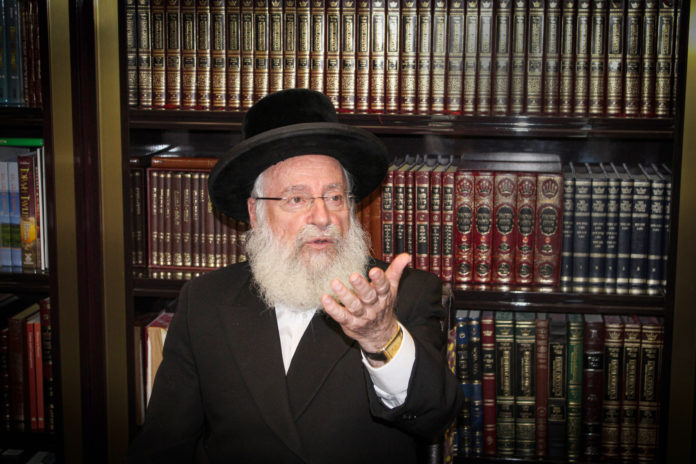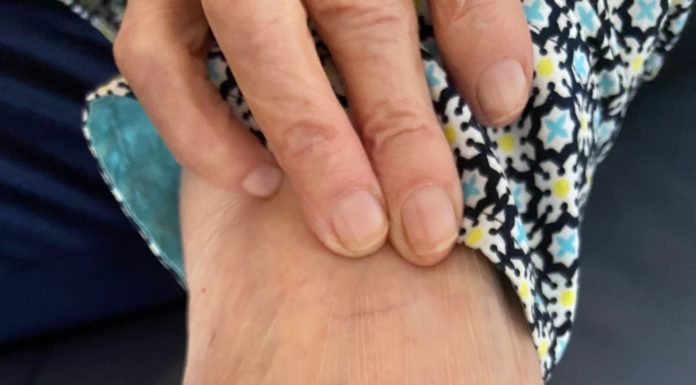I enter the luxurious Brooklyn home of Rav Asher’s host to find the rav sitting in an ornate study, answering a shailah over the phone while editing a teshuvah for another volume of his magnum opus, Minchas Asher. The identity of the person who is seeking his opinion on the other side of the phone conversation is unknown to me. He may be Sefardic or Ashkenazi, Mizrachi, Modern Orthodox or chasidic.
Indeed, it is rare to find a universally accepted figure who is admired by Jews across the spectrum and who seek his guidance and abide by his halachic rulings, as Rav Asher Weiss. He is a uniquely unifying voice who helms a kehillah, various kollelim and a beis horaah, and gives numerous shiurim to several yeshivos and other institutions every week. He is also the posek for Shaare Zedek Hospital and is often consulted by the IDF and the Mossad, in addition to fielding complex queries from around the world. Undoubtedly, his fluency in the English language has buttressed his popularity among people from America’s Modern Orthodox communities.
Though Rav Asher has been living in Eretz Yisrael since his bar mitzvah, his English is flawless. He speaks with only a very slight accent, and his diction, pronunciation and vocabulary are those of a literary professor.
I attempt to get the rav to share his perspective on how he gained such a broad appeal. Rav Asher grins and gently admonishes me, “Do you expect me to say that I deliver the best shiurim? But I do believe that if one focuses on giving over Torah lishmah without agenda or politics and simply tries to bring out the emes and the beauty of Torah, people from every walk of life will flock to hear and accept that Torah.”
Indeed, the rav’s shiurim are filled with Jews of all backgrounds. Rav Dovid Cohen, the rosh yeshivah of Yeshivas Chevron once said that between Rav Asher’s shiurim and the Minchas Asher on Shas, the rav might have more talmidim in Chevron than he does.
Rav Asher is so popular in the Sephardic community, and was held in such high esteem by its late eminent leader Rav Ovadia Yosef, that Rav Ovadia asked the rav to help him write the last few teshuvos before his passing. Rav Ovadia’s grandson, Rav Ovadia Yosef Toledano, is one of Rav Asher’s most illustrious talmidim. He learned in one of the rav’s kollelim for years and now sits on Rav Asher’s beis din as one of its prominent dayanim.
We begin our conversation, however, not by focusing on his own rabbanus, but by speaking about the rav’s father, Rav Moshe Weiss, and his relationship with the Klausenberger Rebbe.
Connection
to the Klausenberger rebbe
The rav’s father was famously close to Rav Yekusiel Yehudah Halberstam, zt”l,the Klausenberger Rebbe. Their connection had a profound influence on his own life and the life of his son. “My father met the Rebbe in Auschwitz on the second day of Shavuos 1944,” Rav Asher begins. “After the liberation, the Rebbe sought volunteers to help give the dead a proper burial and inter them in a kever Yisrael. Nobody was willing to volunteer. When this Gehinnom finally ended, people wanted to start living again and not be busy with the dead.”
The rav pauses to ensure that I not mistake his statement as a judgment on those survivors. “Unfortunately, seeing corpses in Auschwitz was very commonplace,” he explains. “The survivors got desensitized to these sights and also wanted to move on from the horrors that they were put through and start a new life. My father was the lone volunteer. Together with the Rebbe, he got hold of an army jeep, since they were in a war zone, and roamed the land from sunrise until sunset to find bodies and bury them according to halachah. Because of his efforts, the Rebbe bentched my father and told him that he would have children who teach Torah and light up the world. Baruch Hashem, my brothers and I are all involved in harbatzas haTorah.
“After the liberation, my father became the Rebbe’s right-hand man and assisted him in his efforts to rebuild klal Yisrael. It was astounding that the Rebbe was able to invest so much physical and spiritual energy. He lost his wife and 11 children during the Holocaust, yet he didn’t falter at all. During a private conversation, the Rebbe once told me, ‘Far kein ein rega hob ich nisht merhaher gevein achrei midosav shel Hakadosh Baruch Hu—Not for one moment did I question the ways of the Ribbono Shel Olam.’”
As Rav Asher recalls the Rebbe’s strength in the face of such loss, his gaze wanders dreamingly. “I remember shuddering in awe as the Rebbe told me this,” he says. “When the horrors were finally over, he didn’t take any time to recover, mourn or wallow in pity and bitterness over his personal tragedy. Rather, the Rebbe devoted all his time and energy to building yeshivos, boys’ schools, and girls’ schools. My father helped the Rebbe with these schools, which were located in Foehrenwald, a DP camp near Munich. My mother was a talmidah at the Rebbe’s girls’ school, and the Rebbe was meshadech her with my father. He also served as their mesader kiddushin. He was like a father and mother to all his talmidim. He kept building schools, yeshivos, mikvaos and other infrastructure that was needed to help the remnants of European Jewry reestablish themselves.”
To illustrate his point, Rav Asher relates a story he once shared at an Agudah convention. “The first Erev Yom Kippur after the war, when the tzaddik was sitting in his room preparing for the yom hakadosh, there was a knock on the door. A young girl stood there and said, ‘Every Erev Yom Kippur, my parents would bentch me.
Please give me a brachah.’ The Rebbe took a handkerchief, placed it on her head, and proceeded to give her the customary blessing given by parents on Erev Yom Kippur. A few minutes afterward, there was another knock. In the end, more than 80 young girls came to receive the Rebbe’s brachah that day.





















